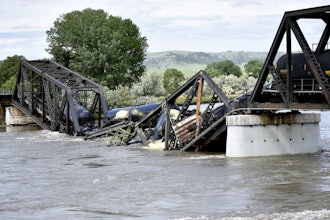
Implementing a new safety management system (SMS) is no small task. Because safety is highly cross-functional, you will need buy-in and support from the full business, as well as dedicated time and resources to develop a plan. A good SMS can take months to develop, creating a huge loss when the plan just sits on the shelf.
Putting a new SMS in place and getting adoption does not have to be difficult. By approaching the new plan as a company-wide change management process, you can save time and effort, while ensuring that the most important aspects of the plan live on.
Safety Management Is Change Management
A safety system may seem like a plan that any organization can put in practice just by drafting one up. Many of the safety practices and procedures are already familiar to the team. So why does this approach to safety fail?
Safety management involves everyone on the team, and requires that individuals change their behaviors to prevent incidents. Changing behaviors is a complex challenge, and your organization should consider a change management approach to overcome this hurdle.
Change management requires that you consider the steps and deliverables needed to develop a high functioning program. As part of the plan, you will need to include communications strategies, accountability, risk planning, measurement, and transparency. The reward is a program that works.
Communicating The New Safety Plan
A large part of implementing a new safety management system is just getting the word out effectively. While key stakeholders will have insight into the planning process, the rest of the team will need clear, effective communications to get onboard.
The best way to detail your new plan is to keep it at the team level. Task supervisors, stakeholders, and other leaders with gathering up their team and sharing the new plan, and help them get it done by drafting great communications that they can use. Be transparent about the plan and show the entire team how they can be involved in creating a safe, efficient work environment.
Designing Accountability With Safety Leaders
While everyone in the organization is accountable for safety, responsibility ultimately falls to designated safety leaders. Leaders can be assigned or elected, but a clear system of accountability ensures that the safety management system stays effective.
These leaders are responsible for several tasks that usually fall out of their direct responsibilities. Safety leaders monitor the health of the program, identifying non-compliance or gaps. They run tests and drills to keep training fresh, and keep equipment like PPE, fire extinguishers, and emergency cut-offs in working order. This direct eye on the process builds long-term compliance.
Planning For Risk
Part of the challenge of implementing a new safety management program is tracking risk and performance. Risk is part of doing business, but the goal of safety is to understand these risks and set strategies in place to mitigate them.
Your new system should generate a risk management plan that profiles risks, mitigations, and metrics across every function. You will need to review risks across each department, ranking them by severity and impact. While the task can be huge, listing general and specific risks for each department shows you where to focus.
Measuring Change To Improve
Profiling risk only gets you halfway. You will also need to track key metrics to show continuous improvement, whether in reducing risks or cutting the number of safety incidents.
Some metrics can be measured often, by tracking days without incidents or by counting the number of unmitigated risks. Others will take time to profile, especially when measuring worker’s comp costs or production downtime. Tracking metrics and acting on results ensures that your costly new safety management system is active and responsive to change.
Enforcing Transparency
Safety management systems are not corporate policies that your team only sees when they mess up. Safety requires team buy-in and clear guidelines for what to expect and where to reduce risk.
Everyone on the team should have access to the details of the safety management system. Your team needs to see what policies are in place, where there are risks, and what role they play in the plan. Your team cannot be safe when they cannot see how to prevent incidents.
Implementing a new safety management system is a challenge that any organization can overcome. By implementing a change management strategy that accounts for risk, transparency, and responsibility, your new safety management plan will be successful for years to come.
The article originally appeared here on Grainger's The Safety Record.






















